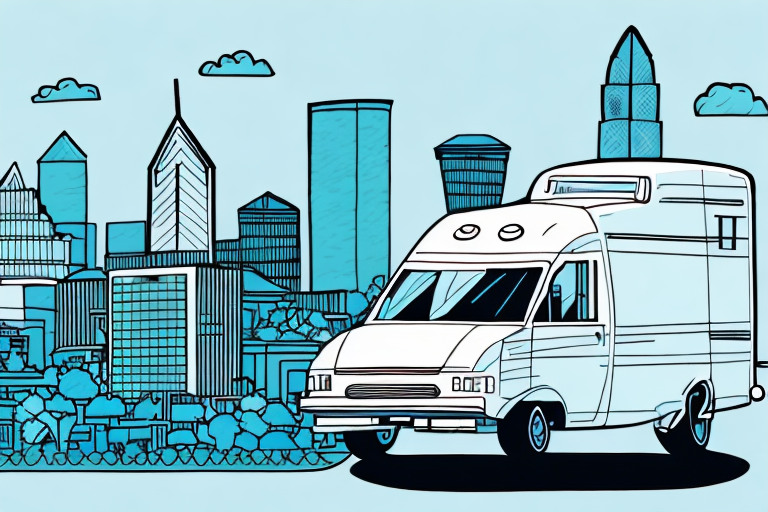Introduction to Medical Driver Careers
If you are interested in pursuing a career in healthcare but prefer a non-medical role, then a medical driver job might be the right fit for you. Medical driver jobs are in high demand due to the increasing need for transporting patients and medical supplies to various locations. In this article, we will explore the benefits of pursuing a career in medical driving.
The Growing Demand for Medical Driver Jobs
The healthcare industry is continually expanding to meet the needs of an aging population. According to the U.S. Bureau of Labor Statistics, employment of ambulance drivers and medical transport drivers is projected to grow 19% from 2020 to 2030, much faster than the average for all occupations. This growth is driven by an increased focus on healthcare services and the essential role that medical drivers play in the system.
The COVID-19 pandemic has further highlighted the critical role of medical drivers. The surge in demand for transporting medical supplies and ensuring patients receive timely care has underscored the necessity for reliable medical transportation services.
Roles, Responsibilities, and Essential Skills
Primary Responsibilities
- Transporting patients to and from medical facilities safely and on time.
- Handling medical equipment and supplies with care.
- Ensuring the comfort and safety of patients during transit.
- Communicating effectively with medical staff and patients.
Essential Skills
- Excellent Driving Skills: A clean driving record and proficiency in navigating various routes.
- Communication: Ability to interact compassionately with patients and coordinate with healthcare professionals.
- Medical Knowledge: Basic understanding of medical terminology and procedures.
- Emergency Response: Ability to provide first aid and handle medical emergencies during transportation.
Advantages of Pursuing a Career in Medical Driving
One of the key advantages is job stability. The ongoing demand for medical drivers ensures a stable employment outlook. Additionally, many positions offer flexible schedules, which can contribute to a better work-life balance.
Career advancement opportunities are also available. With experience, medical drivers can move into supervisory or management roles within transportation departments or healthcare facilities.
Moreover, this career provides a sense of fulfillment, as medical drivers play a crucial role in patient care and the overall healthcare system.
Becoming a Certified Medical Driver
Educational Requirements
To become a certified medical driver, individuals typically need a high school diploma or equivalent.
Licensing and Certifications
- Driver’s License: A valid driver’s license with a clean driving record.
- Commercial Driver’s License (CDL): Required for certain positions, especially those involving the transport of hazardous materials.
- CPR and First Aid Certification: Essential for providing basic medical assistance during transportation.
Training Programs
Medical drivers can enroll in specialized training programs that cover patient care, medical terminology, safe driving practices, and emergency response. Some programs may also offer hands-on experience through internships or clinical rotations.
Certification Process
After completing the necessary training, individuals must pass a certification exam that typically covers patient safety, emergency procedures, and transportation regulations. Certification ensures that medical drivers are prepared to handle the responsibilities of the role effectively.
Job Outlook and Salary Range for Medical Drivers
The job outlook for medical drivers is positive, with a projected growth rate of 19% from 2020 to 2030, according to the U.S. Bureau of Labor Statistics. This growth is driven by the expanding healthcare industry and the critical role of medical transportation.
The median annual wage for ambulance drivers and attendants was $30,830 in May 2021, with the highest 10% earning over $60,120 per year. Salaries can vary based on factors such as location, employer, and experience.
Benefits often include health insurance, retirement plans, and paid time off. Some employers may also offer bonuses or incentives for exceptional performance.
Top Employers Hiring for Medical Driver Positions
Several organizations are known for hiring medical drivers, including:
Additionally, non-profit organizations such as Angel Flight and Mercy Medical Angels offer opportunities for those looking to make a difference in underserved communities.
Technology, Challenges, and Future Trends in Medical Transportation
Technological Advancements
Technology is revolutionizing the medical transportation industry. Mobile applications and advanced dispatch systems improve communication and coordination between drivers and healthcare providers. GPS tracking enhances route efficiency and patient safety, while electronic health records ensure that patient information is accessible and secure.
Challenges Faced by Medical Drivers
- Navigating Traffic: Dealing with heavy traffic can impede timely patient transportation.
- Handling Difficult Situations: Managing distressed or uncooperative patients requires patience and strong interpersonal skills.
- Ensuring Safety: Maintaining patient safety during transportation is paramount, especially in emergency situations.
Future Trends
The integration of telemedicine and remote patient monitoring is expected to influence medical transportation needs. Additionally, the adoption of autonomous vehicle technology may eventually transform how medical transportation is conducted, although human drivers will still play a critical role in patient care and emergency response.
Impact of Medical Drivers on Patient Care
Medical drivers are often the first point of contact for patients accessing healthcare services. Their professionalism, empathy, and reliability can significantly affect patient experiences and outcomes. By ensuring safe and timely transportation, medical drivers contribute to the overall efficiency of the healthcare system, enabling patients to receive necessary treatments without delays.
Moreover, medical drivers who are trained to provide basic medical assistance can offer critical support during transport, enhancing the quality of patient care.
Conclusion
A career as a medical driver offers numerous benefits, including job stability, the opportunity to make a meaningful impact on patient care, and potential for career growth. With the healthcare industry continuing to expand, the demand for skilled medical drivers is expected to remain strong. If you are compassionate, reliable, and dedicated to helping others, a career in medical driving could be a fulfilling path for you.




















